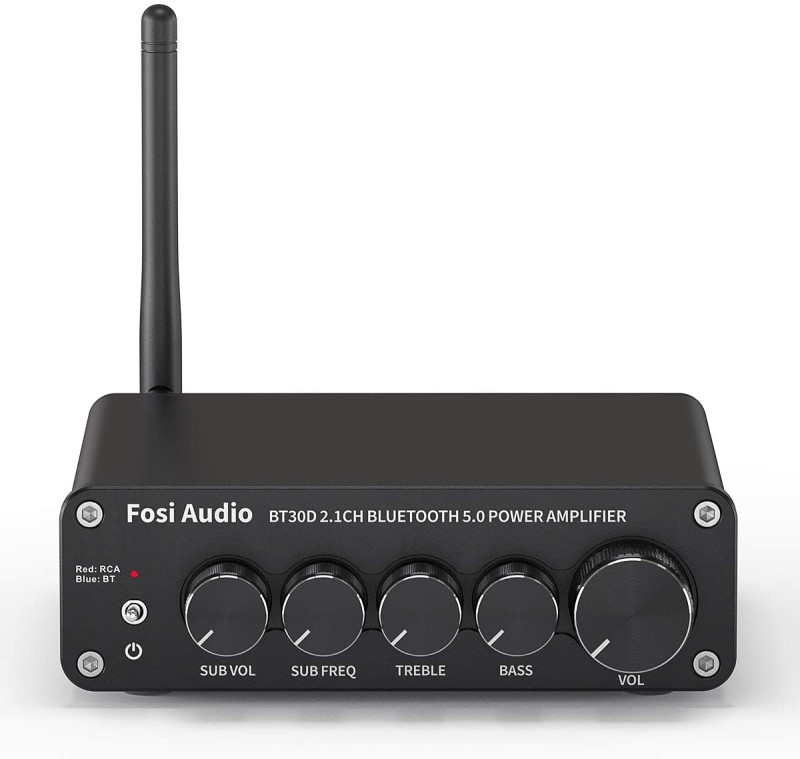Best Speakers for Your Desktop – Pros and Cons of Each Type
We’ve all spent the last couple of years in headphones. Zoom calls, Teams meetings, and more all while there are people in the next room, or right next to us that we are trying to not disturb. But with people returning to work, more of us are interested in getting the speakers out of our ears and onto our desks! Let’s take a look at some different solutions for desktop speakers so that you can determine which will work best for you.
Powered Desktop Speakers
| Pros | Cons |
|---|---|
| Small | Small |
| Designed for nearfield listening | Anemic bass |
| Many connections | Limited output |
| Price | Spotty sub integration |
Your first stop on your journey to desktop speakers may be those designed for that duty. You’ll see names like Audioengine bantered around. And they are great. They make small speakers whose size belies their sound. Plus, they don’t cost an arm and a leg and they are designed to connect directly to your laptop, computer, and many other devices. Heck, some of them even have a headphone port!

The downside is that they are so small. This limits how loud and low they can actually play. Sure, they sound good when you are sitting directly in front of them, but they aren’t going to fill the room with sound. Plus, many don’t have a way to add more bass by adding a subwoofer. Their small size is great for those with limited desk space, but if you want more capable desktop speakers, you’ll need something a little bigger.
Powered Bookshelf Speakers
| Pros | Cons |
|---|---|
| Can play loud/low | Large |
| Better overall fidelity | May lack connections |
| Internally powered | Price |
The old adage that there is no replacement for displacement applies to desktop speakers as well as subwoofers. A bigger speaker will play louder and lower than a smaller speaker simply because of physics. Fortunately, more and more manufacturers are releasing powered speakers. We see them from Fluance, KEF, and others. These speakers will generally be louder and play lower than speakers designed specifically for desktop duties.

The problem is that these speakers are larger. If you have limited desktop space, you may need stands to hold your speakers off to the sides of your desk. Oftentimes, self-powered bookshelf speakers will have limited connections (maybe even just RCA inputs). While this doesn’t mean you can’t use them with your computer, they won’t’ be quite as easy to connect as desktop-specific speakers. As you might expect, they can get very expensive as well.
Normal Home Theater Speakers
| Pros | Cons |
|---|---|
| The largest number of options | Large |
| Flexible reuse | Require amplification |
| Cost | Ports |
But, hey, can’t you just use regular bookshelf speakers on your desktop? Well, if you have the real estate? Sure. There are oodles of home theater bookshelf speakers out there at a large variety of price points. Not only that, but once you own them, you can move them around to just about any other system you own. Normal bookshelf speakers are the most flexible option.
The main problem is that they require amplification which means another box on your desktop aside from the two (probably large) speakers. Luckily, you can pick up something small like this Fosi Audio BT30D DAC/Amp combo. You can connect your computer via RCA or Bluetooth. It has a subwoofer output with a crossover but there is some concern as to how that crossover actually operates. All that for about $80. Even when you factor the Fosi in with the price of many bookshelf speakers, they are less expensive than many of the powered speakers on the market.
Lastly, and most importantly, home theater speakers are meant to be used at a distance. That doesn’t mean you can’t use bookshelf speakers on your desktop, it just means you need to be careful. Take note of rear ports and any other designs that may mean that the sound will be compromised from sitting so close.
Take Away
No one solution is going to work for everyone. If you just want better sound without headphones, then speakers designed for desktop use will have all the connections you need without taking up too much space. But if you want really good sound, you also have options. Have you upgraded your desktop speakers? Let us know what solution you used and how it turned out in the comments!



